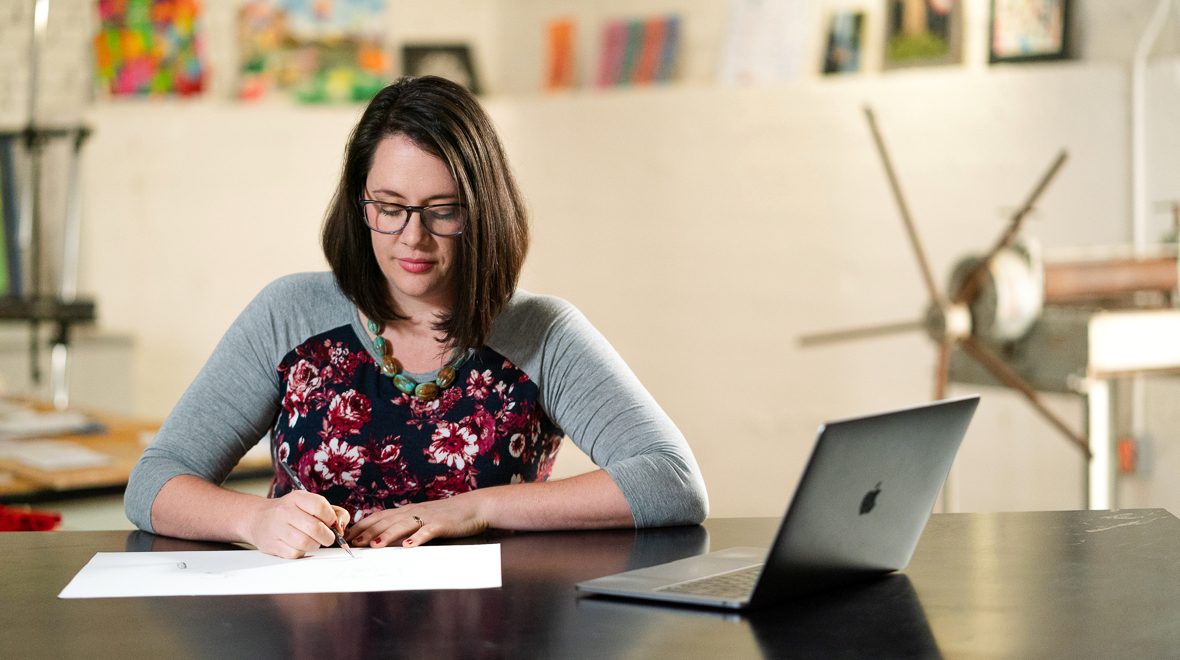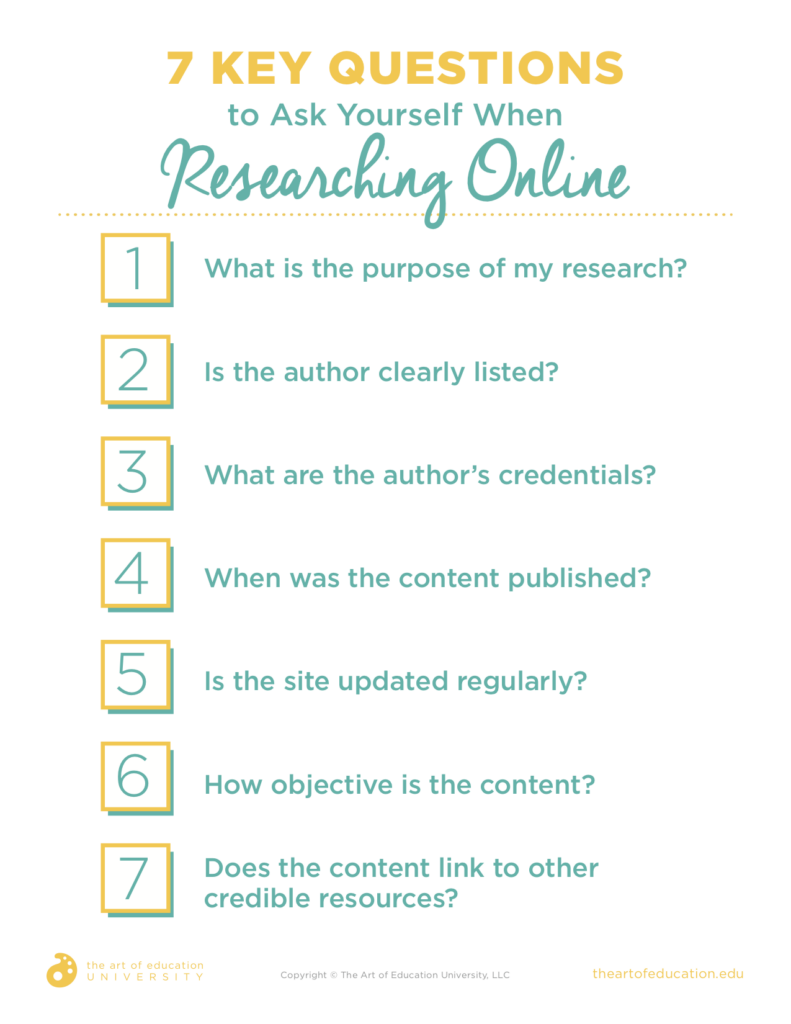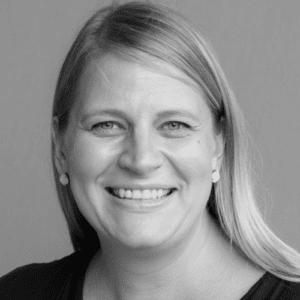In the era of internet misinformation, the importance of using a critical eye to double-check the source of your research has become even more important. After all, that study you just read could be the inspiration for the best research-based lesson plan you’ve ever written. Or, it could be some internet musings of your dad’s cousin’s uncle typing away in his basement.
Let’s get real about using reliable research as you plan your art curriculum or tackle your graduate work by looking at four key topics.
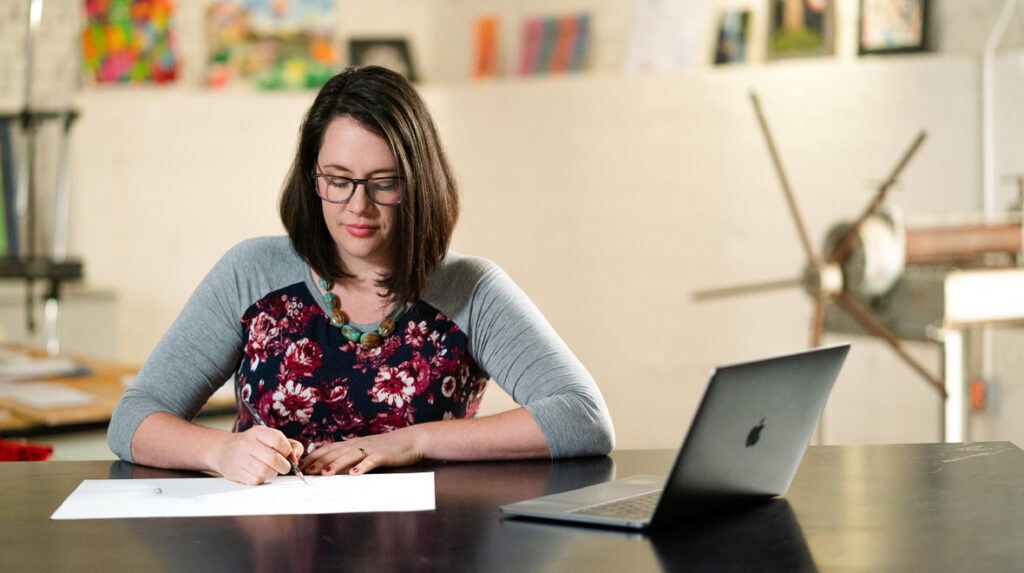
1. Purpose
The reason for your research is going to help determine how critical you want to be with your supersleuth eyes. Are you looking for a cool lesson plan idea to catch the interest of your squirrely fourth-period class? In that case, yes, you’ll want to find something you think will work. However, it’s not terribly critical to find the most recent academic peer-reviewed research.
Are you looking to beef up your argument in a graduate course discussion? Or perhaps looking for research-based ideas on teaching art to students with autism? In these cases, you’ll want to use your critical eye to make sure what you’re finding has some backing to it.
2. Author
Next, let’s tackle the question about whether the research you’re looking at is the work of your fourth cousin twice removed or an internet troll across the world.
Take a look at the author. Who wrote this fantastic webpage you just found? Is the author clearly listed? What are the author’s credentials? Do their credentials give them authority on the topic? Can you find the author referenced in places other than this particular website? If you can’t find at least some of the answers to these basic questions, you will want to consider how you’re going to use the source.

3. Date
Third, let’s look at the date of your resource. When was the research or website published? Can you tell when the content was written? Is the resource updated regularly? Are the links up-to-date and working? If the content is outdated or there are many dead links, you’ll probably want to reconsider using the resource.
4. Objectivity
Fourth, take a look at the reason this resource is out there. Is it trying to get you to think a certain way? Is this a personal website expressing personal opinions? Does the website link to other credible resources or only opinion-based sites? Does the site use emotional language? If so, the resource might be just fine for lesson planning or idea gathering. However, you might look for other options or do some more digging if you’re conducting research.
Now that you know what to look for, let’s talk about some common sites you might run across.
Okay, so there are some pretty common websites we need to talk about.
Wikipedia
Wikipedia is a great starting place for information. However, in most cases, it probably should be limited to just that—a starting place. It is a crowd-sourced encyclopedia, which means it could be your cousin, Jimmy, or your sneaky sixth-grade student who just changed the facts in the article you’re viewing. Use with caution.
Teachers Pay Teachers
Let’s talk about Teachers Pay Teachers (TPT) next. TPT is an amazing resource for classroom materials. Remember when we were talking about the purpose of your research? If you are looking for the perfect activity to help teach your squirrely sixth graders, then the answer is, yes! Search on! However, if you’re looking for a resource for a graduate course, you might want to reconsider. We don’t know who wrote the resource or what kind of background they have. In most cases, you can’t completely answer those questions about the author that we talked about earlier.
Social Media and Blogs
Social media. Let’s talk. And, let’s keep in mind that social media was created to do just that—talk and share, regardless of the author’s credentials or background. Blogs are another tricky resource. Some blogs you can go through and answer many of those questions above. Sometimes a blog can be extremely reliable, and sometimes it leaves too many questions unanswered to be considered a reliable resource. Consider your research purposes and proceed with caution.
As you research use this helpful download to help guide you.
So where can you do research? If you’re looking for more academic sources than your average lesson plan idea search, here are a few places to check out.
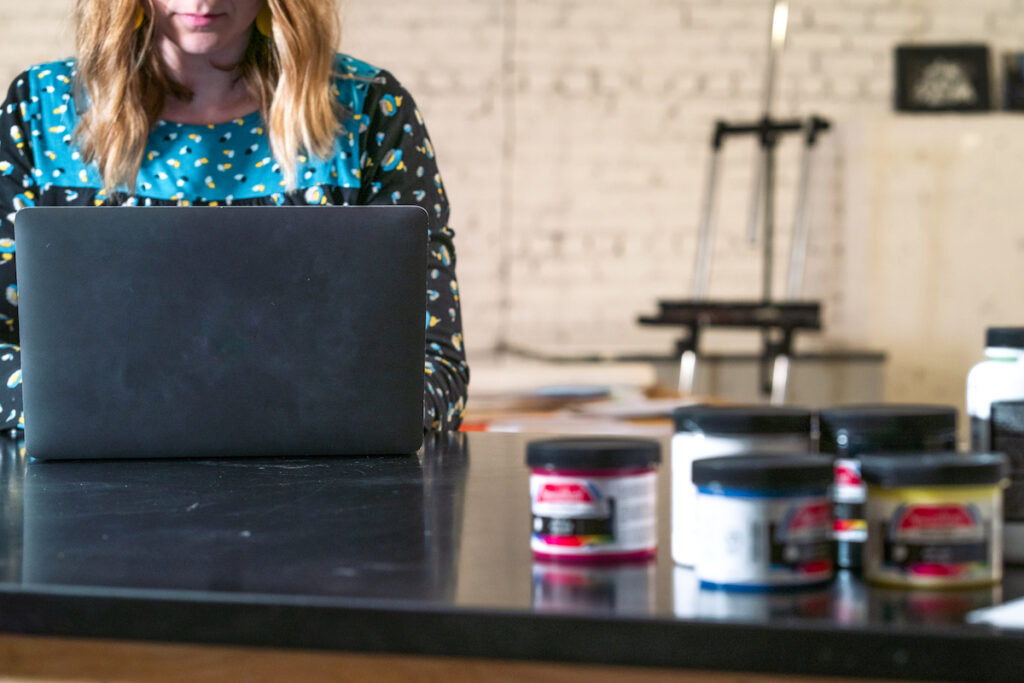
EBSCOhost
First, if you’re taking an AOEU course or have enrolled in the AOEU Master’s Degree, you have access to EBSCOhost resources through Library Services. Start there. If you have yet to take the plunge and enroll, you can try using your local library or your school library for research. These libraries often have resources for academic, reliable searches.
Google Scholar
You can also check out Google Scholar. This is an easy way to search for scholarly literature with the power of the almighty Google search.
The Art of Education University
If you’re enrolled in the master’s degree or a course at AOEU, you also have access to two additional resources. The first is the AOEU Student Handbook. This is a one-stop shop for all kinds of helpful information that will directly help you in your coursework and beyond. The second is our Library Services—always a quick email away for those burning research questions. You can even schedule a video meeting for help! Whatever the level of support you need with research, AOEU’s got you covered!
So, the next time you’re looking for research on the internet, proceed with caution! Make sure you’re keeping the purpose of your search at the forefront of your mind. From there, look at the author, date, and how objective the source is before deciding whether to use it. And, if a high-quality resource is key for your work, turn to a well-known site like the ones listed above.
What are your favorite ways to find quality research?
Do you have any insight to share?
Magazine articles and podcasts are opinions of professional education contributors and do not necessarily represent the position of the Art of Education University (AOEU) or its academic offerings. Contributors use terms in the way they are most often talked about in the scope of their educational experiences.
